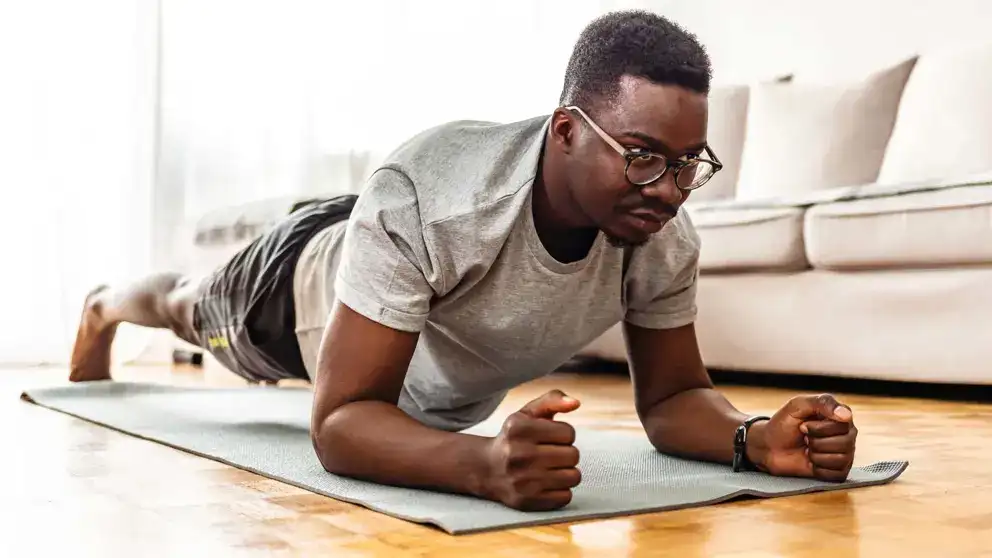Even though people know exercise is good for them, most still don’t get enough. And it sometimes seems like there are more myths circulating about exercise than there are people actually doing it. Whether you’re just starting out or a seasoned veteran, here are six myths about exercise busted to help you reach your goals.
1. Exercise takes too much time
This is probably the number one reason people give for not exercising. But the notion that exercise takes too much time has no truth to it. As little as 20-30 minutes of activity to get your heart and breathing rates up is all you need. And you don’t have to do it all at once. Breaking activity up into chunks throughout the day is just as beneficial. You can even do exercise snacks, which are small bursts of activity that can last anywhere between 30 seconds to two minutes.
If you’re truly concerned about time, you can’t afford not to exercise. The return on the investment is too great to ignore. Exercising for as little as 75 minutes per week can add another 1.8 years to your life. This works out to approximately six minutes back in extended life for every one minute of exercise. Just think what you can do with all that extra time.
2. You have to go to the gym
For plenty of people, going to the gym is a sacred ritual – a time to get some exercise and even do some socializing. However, going to the gym isn’t the only option for getting some physical activity.
The most accessible way to exercise is by simply walking. You don’t need any special equipment, just go out your door. The pandemic has also shown us how we can adapt at-home exercises. Want to do resistance training at home? No problem. From push-ups to using milk jugs as weights, you can get a full body workout without any equipment. And there are plenty of exercise videos on YouTube, Zoom or Instagram, that will turn your family room into a fitness studio.
You can also do what I call “stealth exercise”, by making small changes to your routine such as taking the stairs instead of the elevator, walking to the store instead of driving, cycling to work or scootering. Even household chores like cutting the grass or mopping the floor count.
3. The more you sweat, the better
Sweating and exercise often go hand in hand. That’s because when you exercise, your working muscles generate heat. Too much heat can be dangerous so your body has mechanisms to cool down. Sweating is one of them. When sweat evaporates it absorbs heat and cools you down.
How much you sweat depends as much on the weather conditions as on how hard you’re exercising. On a hot, humid day, a light walk, or even sitting can cause you to sweat. On a cool, dry day with a breeze you might not even notice yourself sweating. And sweating isn’t the only way the body cools itself. Warm blood gets pushed toward your skin to radiate heat and cool down, which is why the face, arms and legs of some people turn red while exercising.
4. Exercise needs to hurt to bring results
‘No pain, no gain!’ Right? Wrong. Exercise doesn’t have to hurt, during the activity or the day after. If you are sore the day after exercising, it is likely delayed onset muscle soreness (or DOMS), the result of microscopic tears in the muscle. It isn’t harmful and will usually go away in a day or two. It’s common when exercising muscles that aren’t used to. This can occur right at the start of your program, or if you change up your exercise routine.
But muscle soreness is not the sign of a great workout or your fitness level. As your muscles get used to an activity, they’ll adapt and will be less likely to feel sore. If you are sore, listen to your body. Active movement, staying hydrated and quality sleep can help. However, if the soreness lasts longer than a week or if you get sharp pain or numbness, contact your doctor.
5. Strength training is only for bodybuilders
Strength training is for everyone. The World Health Organization recommends strengthening activities twice weekly. This doesn’t mean you have to start lifting heavy weights at the gym. Your goal could just be to maintain your strength. And you don’t need a set of weights either. A resistance band will do, or anything you can find in your kitchen pantry. You can also do exercises using your body’s weight as resistance, such as push-ups (modified push-ups on a chair or against a wall are ways to make it easier), squats or simple exercises like standing up from a chair.
It is even more important to concentrate on strengthening exercises the older we get. Ten percent of adults over 65 years have sarcopenia (a rapid loss of muscle mass and strength) but strength training is one of the better treatments . Strength training can reduce pain from arthritis, improve sleep, strengthen bones and reduce back pain. And it’s never too late to start - Even people over 90 years of age can benefit from strength training.
6. Morning is the best time to exercise
Morning tends to be the most popular time of day to exercise. Many people start their day with physical activity to energize themselves. It also means it won’t be hanging over your head all day until you do it.
Since the human body has a built-in clock that oversees many of your body’s functions, when you exercise can have differing effects. While there is little evidence to suggest exercising in the morning is ideal for weight loss, it can increase your daily productivity and help you get to sleep faster. However, as the day goes on, your body’s temperature increases, which may lead to stronger muscle contraction and greater exercise efficiency and perhaps even better performance.
In the end, the best time to exercise is when it fits into your daily schedule and you’re most likely to do it.

Dr. Scott Lear
Dr. Scott Lear is a leading researcher in the prevention and management of heart disease. He holds the Pfizer/Heart and Stroke Foundation Chair in Cardiovascular Prevention Research at St. Paul’s Hospital in Vancouver, and he is a professor in the faculty of health sciences and the department of biomedical physiology and kinesiology at Simon Fraser University. Dr. Lear also lives with heart disease himself. Follow his blog at drscottlear.com.

